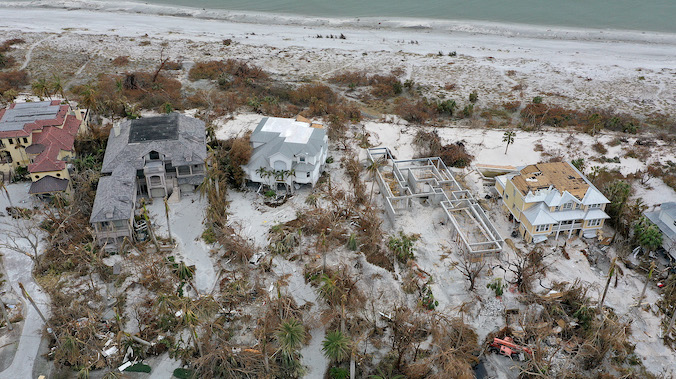FEMA Won’t Just Rebuild Your Flooded House the Same Way Anymore
Photo by Joe Raedle/Getty Images
You could do worse for a definition of insanity than rebuilding houses destroyed in coastal floods in exactly the same place and exactly the same way, over and over, even as the seas rise around them.
The Federal Emergency Management Agency is finally acknowledging that bit of crazy-making government chicanery and facing up to increasing climate change risks. In response to an executive order from President Biden, the agency announced the implementation of the Federal Flood Risk Management Standard (FFRMS), which will allow FEMA to consider both present and — gasp — future risks when considering a rebuilding project.
That means that the best projections of sea level rise are now actually included in their assessments.
“FFRMS will allow us to enhance resilience in flood-prone communities by taking future flood risk into consideration when we rebuild structures post-disaster,” said FEMA administrator Deanne Criswell, in a press release on Wednesday. “This is a huge win that will also allow us to end the repeat loss cycles that stem from flooding and increase the safety of families and save taxpayer dollars.”
FFRMS lets FEMA expand the defined floodplain area based on projections, and also increase the projected elevation of floods. This might mean a rebuilt structure is moved entirely, or built on raised foundations of one kind or another to exceed those elevations; the agency has found that adding two feet of elevation to a structure adds less than two percent to its cost. (Two feet, of course, eventually won’t be enough in many places; we take what progress we can get, I suppose.)
Before FFRMS, FEMA was required to protect “non-critical” projects to withstand a 100-year flood, or a flood with a one percent chance of happening any given year. But without considering sea level rise or increased precipitation from climate change, those calculations are off from the start: what used to be a 100-year flood is increasingly becoming a 25-year event, or a 10-year event, or more or less “Tuesday.”
“The human and economic cost of flooding is devastating and will only grow in the years ahead as the impacts of climate change grow more intense and reach more communities,” said Homeland Security Secretary Alejandro Mayorkas (FEMA is a part of the DHS). “We cannot be passive as climate change threatens the safety and security of the American people and our homeland.”
FEMA has estimated that the stricter standard will cost around $150 million over ten years — a paltry sum both in comparison to its annual disaster spending in the low billions and when considering how much it might save in avoided repeated rebuilding.
The new rule will go into effect on September 9. Apropos of nothing, the historical peak of hurricane season is September 10.